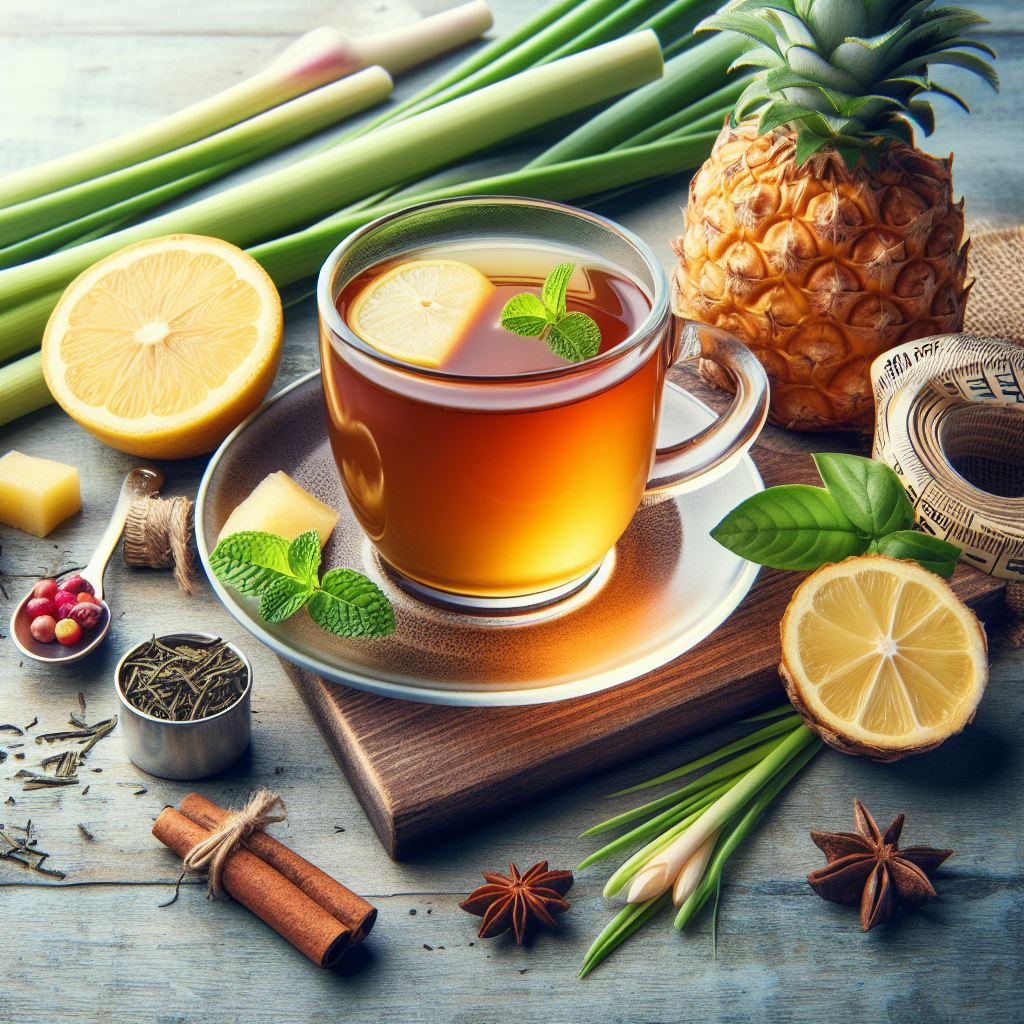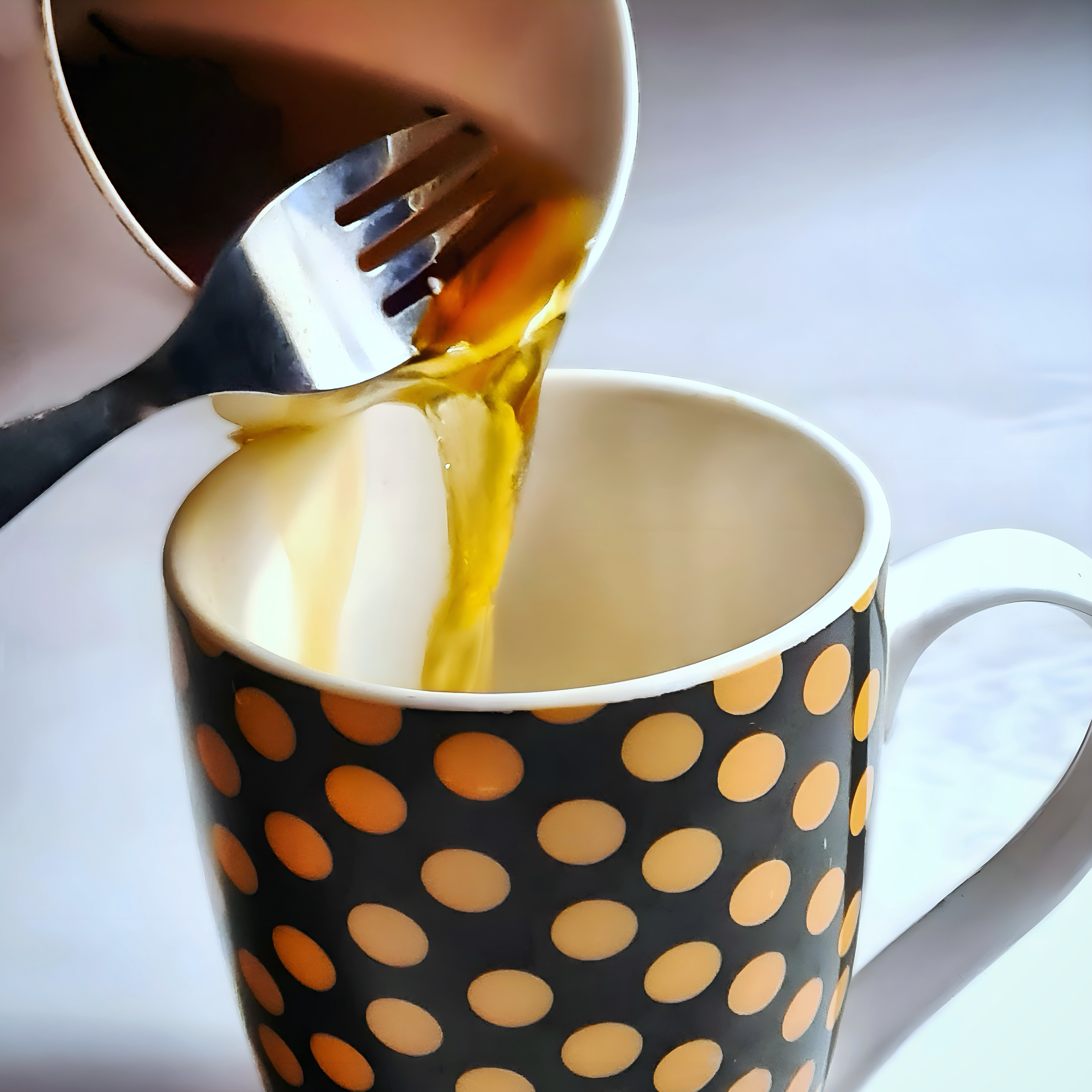Imagine sipping a soothing elixir that not only delights your taste buds but also enhances your well-being. Welcome to the magical world of sage tea! Sage tea is a herbal infusion made from the leaves of the sage plant, a member of the mint family. This tea has a rich history, a unique flavor profile, and numerous health benefits that make it a wonderful addition to your tea collection. In this blog post, we will explore how to make sage tea, unveil its power, and share some tips and tricks to make your sage tea experience even more enjoyable.

Unveiling the Power of Sage Tea
Sage has been revered as a medicinal herb since ancient times. The name “sage” comes from the Latin word “salvia”, which means “to heal”. Sage was used by the Egyptians, Greeks, Romans, and Arabs for various purposes, such as treating wounds, infections, snake bites, and memory loss. Additionally, it was considered a sacred herb by many cultures, and was used for rituals, ceremonies, and cleansing.
Sage tea is not only a delicious drink, but also a powerful health booster. This variety of tea contains high levels of antioxidants, which protect your cells from free radical damage and oxidative stress. Sage tea also has anti-inflammatory properties, which can help reduce pain and swelling in conditions like arthritis, asthma, and sore throat. Not only this, it can improve your digestion by stimulating bile production and easing stomach cramps. Additionally, sage tea can boost your cognitive function by enhancing memory, concentration, and alertness.
There are many varieties of sage that can be used for tea, each with its own flavor and aroma. Some of the most common ones are:
Common sage (Salvia officinalis):
This is the most widely used variety of sage for tea. It has a strong, earthy flavor and a slightly bitter aftertaste. It pairs well with honey or lemon to balance its intensity.

Pineapple sage (Salvia elegans):
This variety of sage has a fruity, pineapple-like flavor and aroma. It has a milder taste than common sage and adds a refreshing touch to your tea.

Purple sage (Salvia officinalis ‘Purpurascens’):
This variety of sage has a similar flavor to common sage, but with a hint of sweetness and a beautiful purple hue. It makes a lovely decorative addition to your tea.

Gathering the Ingredients and Tools
To make sage tea, you will need the following ingredients and tools:
- Fresh or dried sage leaves: You can use either fresh or dried sage leaves for your tea, depending on your preference and availability. Fresh sage leaves have a more intense flavor and aroma than dried ones, but they also spoil faster. Dried sage leaves are more convenient and last longer, but they may lose some of their potency over time. You can use about 1 tablespoon of fresh sage leaves or 1 teaspoon of dried sage leaves per cup of water.
- Pure water: The quality of water you use for your tea will affect its taste and health benefits. Use filtered or spring water for the best results. Avoid using tap water or distilled water, as they may contain impurities or minerals that can alter the flavor or reduce the effectiveness of your tea.
- A teapot or infuser: You will need a teapot or infuser to steep your sage leaves in hot water. You can use any type of teapot or infuser that you like, such as glass, ceramic, stainless steel, or silicone. Make sure it is clean and free of any residues or odors that can affect your tea.
- Optional add-ins: You can customize your sage tea by adding other ingredients that enhance its flavor or health benefits. Some popular add-ins are honey, lemon, ginger, cinnamon, lavender, or other herbs like chamomile or peppermint.
To source high-quality sage leaves, you have two options:
- Grow your own sage plant: Growing your own sage plant is a rewarding and fun way to enjoy fresh sage leaves anytime you want. Sage is an easy-to-grow herb that thrives in sunny locations and well-drained soil. You can grow it indoors in pots or outdoors in gardens or containers. You can harvest your sage leaves throughout the year by snipping them off with scissors or pruning shears.
- Purchase from trusted suppliers: If you don’t have access to fresh sage leaves or prefer to use dried ones, you can purchase them from trusted suppliers online or in stores. Look for organic or wild-harvested sage leaves that are free of pesticides or chemicals. Check the expiration date and storage instructions on the package to ensure freshness and potency.
Brewing the Perfect Sage Tea
Brewing sage tea is a simple and enjoyable process that only takes a few minutes. Here are the basic steps to follow:
- Boil water: Bring some water to a boil in a kettle or a pot. You can use about 1 cup of water per serving of tea, or adjust the amount according to your preference.
- Steep sage leaves: Place your sage leaves in a teapot or infuser and pour the hot water over them. Cover the teapot or infuser and let the sage leaves steep for about 5 minutes, or longer if you want a stronger flavor. You can also adjust the steeping time according to your taste and the type of sage you are using.
- Strain and serve: Strain the sage tea into a cup and enjoy it hot or warm. You can also add your optional add-ins at this point, such as honey, lemon, ginger, or other herbs. Stir well and savor your tea.

You can also brew sage tea using cold water or ice, which can be refreshing and soothing on hot days. Here are some variations to try:
- Sun tea: Place your sage leaves in a glass jar or pitcher and fill it with cold water. Cover the jar or pitcher and place it in a sunny spot for about 4 hours, or until the water turns light green. Strain the tea and refrigerate it until chilled. Enjoy it cold or over ice.
- Iced sage tea: Brew your sage tea as usual using hot water, but double the amount of sage leaves you use. Strain the tea and let it cool down slightly. Pour the tea into a glass or pitcher filled with ice cubes and stir well. Enjoy it cold or over ice.
To enhance the flavor and aroma of your sage tea, you can use some unique brewing techniques or tips, such as:
- Crushing or bruising the sage leaves before steeping them, which releases more of their oils and essence.
- Adding a pinch of baking soda to the water before boiling it, which neutralizes any acidity and makes the tea smoother and sweeter.
- Warming up your teapot or infuser before adding the sage leaves and water, which prevents heat loss and keeps your drink hot longer.
Flavorful Sage Tea Twists and Pairings
Sage tea is a versatile drink that can be enjoyed in many different ways. You can experiment with different flavors and combinations to create your own signature tea blends. Here are some ideas to inspire you:
- Citrus zest: Adding a bit of citrus zest, such as lemon, orange, or grapefruit, to your sage tea can brighten up its flavor and add a refreshing touch. Citrus zest also contains vitamin C and antioxidants that can boost your immune system and fight infections.
- Cinnamon: Adding a stick of cinnamon to your tea can warm up its flavor and add a spicy kick. Cinnamon also has anti-inflammatory and antibacterial properties that can help with sore throat, cough, and colds.
- Ginger: Adding a slice of fresh ginger can spice up its flavor and add a zesty touch. Ginger also has anti-inflammatory and digestive properties that can help with nausea, indigestion, and bloating.
- Lavender: Adding a few buds of lavender can sweeten its flavor and add a floral touch. Lavender also has calming and relaxing properties that can help with stress, anxiety, and insomnia.

You can also blend sage with other herbs and botanicals to create your own custom tea blends. Some herbs that pair well with sage are:
- Chamomile: Chamomile is a soothing herb that has a mild apple-like flavor and aroma. It can help with insomnia, anxiety, inflammation, and menstrual cramps. Blending chamomile with sage can create a relaxing and comforting tea that is perfect for bedtime.
- Peppermint: Peppermint is a refreshing herb that has a minty flavor and aroma. It can help with digestion, headaches, congestion, and bad breath. Blending peppermint with sage can create a stimulating and invigorating tea that is perfect for morning or afternoon.
- Rosemary: Rosemary is an aromatic herb that has a pine-like flavor and aroma. It can help with memory, concentration, circulation, and hair growth. Blending rosemary with sage can create a flavorful and energizing tea that is perfect for work or study.
To elevate your overall tea-drinking experience, you can also pair your sage tea with some complementary food items, such as:
- Lemon shortbread cookies: Lemon shortbread cookies are buttery cookies that have a tangy lemon flavor. They pair well with sage tea because they balance its earthiness and bitterness with their sweetness and acidity.
- Light salads: Light salads are salads that are made with fresh greens, fruits, nuts, cheese, or dressing. They pair well because they complement its freshness and lightness with their crunchiness and juiciness.
- Cheese platter: Cheese platter is a selection of cheese varieties that are served with crackers, bread, fruits, nuts, or jams. They pair well with sage tea because they contrast its herbal and savory flavor with their creamy and sweet flavor.
Sage Tea for Wellness and Self-Care
Sage tea is not only a tasty drink, but also a therapeutic one. This tea can help you improve your wellness and self-care in many ways, such as:
- Soothing sore throat: Sage tea can help relieve sore throat by reducing inflammation, killing bacteria, and coating the throat with a protective layer. You can gargle with the tea or sip it slowly to ease the pain and discomfort.
- Alleviating menopausal symptoms: Sage tea can help reduce hot flashes, night sweats, mood swings, and memory loss associated with menopause. It can balance the hormones and regulate the body temperature by acting as a natural estrogen.
- Aiding in digestion: Sage tea can help improve digestion by stimulating bile production, relaxing the stomach muscles, and preventing gas and bloating. It can also help with constipation, diarrhea, and irritable bowel syndrome by regulating the bowel movements.
- Promoting relaxation and mental clarity: Sage tea can help calm your nerves and clear your mind by reducing stress, anxiety, and depression. It can also enhance your memory, concentration, and alertness by boosting the blood flow to the brain.
If you are interested in learning more about sage tea’s medicinal benefits, you can check out these additional resources or references:
- [The Everything Guide to Spices for Health]: This is a comprehensive guide that covers everything you need to know about sage as a healing herb, including its history, varieties, cultivation, harvesting, storage, preparation, uses, benefits, side effects, and precautions.
- [Sage Tea Recipes]: This is a collection of recipes that show you how to make different types of tea, such as lemon sage, honey sage, ginger sage, and more.
- [Sage Tea Benefits]: This is a video that explains the benefits of sage tea in a simple and engaging way. It also demonstrates how to make the tea using fresh or dried sage leaves.
Conclusion
Sage tea is a wonderful drink that can enrich your life in many ways. It has a rich history, a unique flavor profile, and numerous health benefits that make it a versatile and valuable herbal infusion. You can enjoy this healthy tea in various ways, experimenting with different blends and brewing techniques. You can also pair it with complementary food items to elevate your overall tea-drinking experience. Not only this, but it can also help you improve your wellness and self-care by soothing your ailments, balancing your hormones, and promoting your relaxation and mental clarity.
We hope you enjoyed this blog post on how to make sage tea. We invite you to embark on your own sage journey and discover its magic for yourself. Feel free to share your sage experiences, ask questions, or suggest your favorite sage tea recipes in the comments section below. Happy sipping!
Check Out More Tea-Related Article:
- How to Make Dandelion Tea: A Step-by-Step Guide
- Pu-erh Tea Benefits and Beyond: Everything you need to know
- Soothing Teas for Gastritis Relief: The Ultimate Guide for Your Stomach
- Milk Thistle Tea: The Ultimate Brew for Wellness and Vitality
- Tea and Menstruation: How to Brew Your Way to a Better Period





Leave a Comment